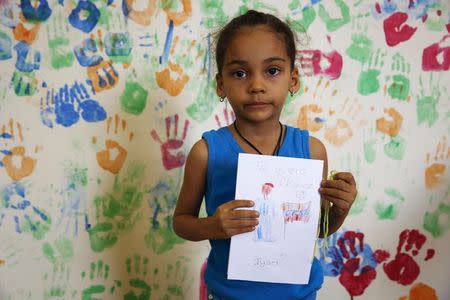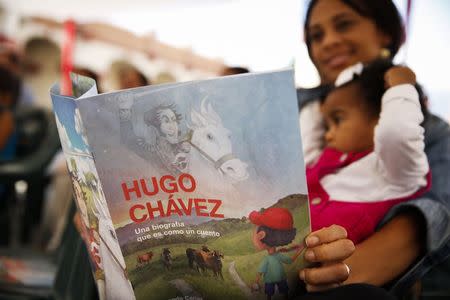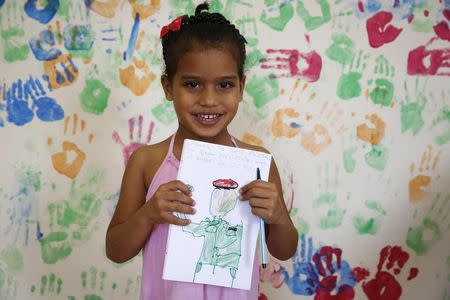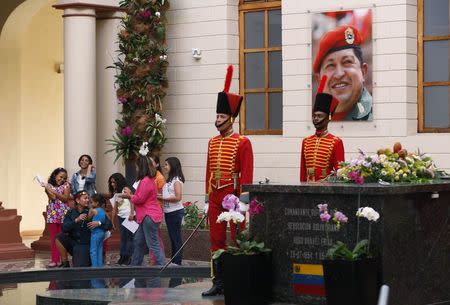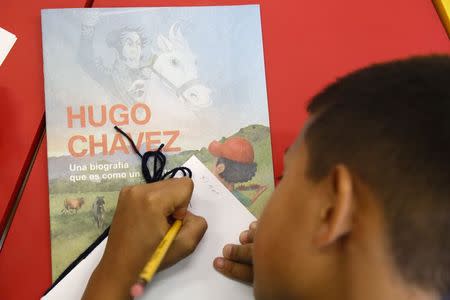Venezuelan children learn to read and write ... about Hugo Chavez
By Liamar Ramos and Javier Andrés Rojas CARACAS (Reuters) - Iruani Arrechedera, an eight-year-old Venezuelan girl, swears she met late President Hugo Chavez in her mother's womb. Years later, she saw him giving a speech at the Miraflores presidential palace from a balcony overlooking the street, and fell in love. She related that tale in a writing workshop for children held by the Communication Ministry last weekend to promote the legacy of the socialist leader who ruled Venezuela for 14 years until he died of cancer in 2013. "He was a very nice President," said Arrechedera, before burst into tears as she remembered Chavez's death. Some 20 children drew pictures of Chavez's life and penned short stories, under the watchful gaze of tutors and proud parents. They then read the stories aloud while standing in front of the hillside Caracas military barracks where he Chavez buried. One workshop leader taught a small group of girls the song "Beloved Country" that Chavez sang during his last television appearance. One mother insisted her young daughter blow a kiss toward Chavez's tomb. The initiative has infuriated opposition critics who see it as an attempt to indoctrinate children, similar to a controversial distribution on textbooks that glorify Chavez and belittle his adversaries. Organizers of the activity, which will be held again this weekend, dismiss such criticism. They say under the same logic, taking children to Disney World would be indoctrinating them with U.S. values. "Indoctrination would be if we told them to deify Chavez's figure," said Carmen Perez, one of the workshop participants. "We are simply remembering all of his work, his thoughts," the 46-year-old choreographer added. During nearly 15 years in office, Chavez pulled millions of Venezuelans from poverty with dozens of social programs implemented thanks to decades of prolific oil revenues. Detractors say he squandered billions of dollars and used state institutions to snuff out dissent. Since his death, supporters have spread his image across the country. His signature and a stencil of his eyes adorn the front of government buildings, his handwriting inspired a digital font, and the events of his life were set to a contemporary ballet. (Writing by Diego Ore; Editing by Brian Ellsworth and David Gregorio)


